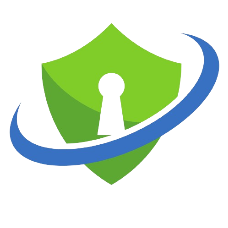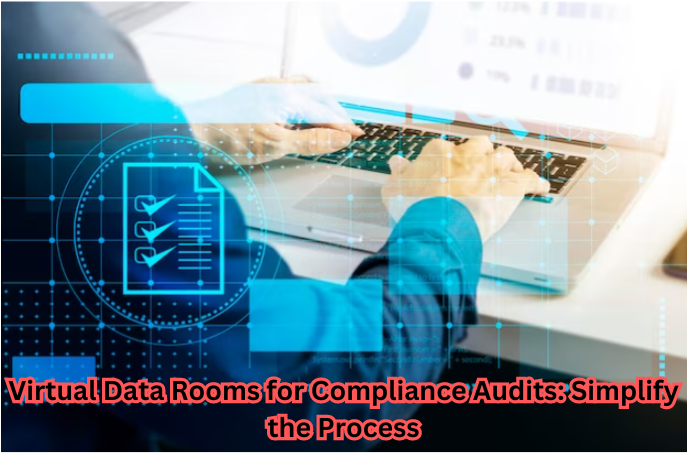Maintaining conformity with rules and standards is critical in the ever-changing world of company operations. The need for efficient solutions to speed compliance audits becomes apparent as firms navigate through a regulatory landscape that is always changing. The Virtual Data Room (VDR) is one such product that has grown in popularity over the past several years. This essay will explore why virtual data rooms are important for compliance audits, how they make the process easier, and how they improve productivity and security.
Gaining Familiarity with Compliance Audit Environment
First, let’s talk about the difficulties businesses encounter while conducting compliance audits, and then we’ll get into how virtual data rooms might help. With many standards to follow, like GDPR, HIPAA, and SOX, regulatory obligations are getting increasingly severe. Conventional audit procedures are laborious and tedious since these rules are complicated and usually lead to a mountain of paperwork.

The Role of Virtual Data Rooms in Compliance Audits
Improving Document Administration
When it comes to streamlining compliance audits, virtual data rooms are game-changers in terms of document management. Virtual data rooms offer a safe online storage space for all relevant records, as opposed to old-fashioned ways, including paper documentation and human tracking. This facilitates effective document organizing and version control while also guaranteeing quick access.
Making Teamwork Easier
The success of compliance audits depends on the teamwork of many individuals from several departments. Virtual data rooms make teamwork a breeze by creating a single location where all team members can go to see, edit, and contribute to important documents. This ensures everyone involved in the audit is on the same page and speeds up the process.
Strong Protections
The sensitive nature of the material involved makes security a top priority in compliance audits. Encryption, permissions, and audit trails are some of the cutting-edge security features used by virtual data rooms. In addition to preventing unwanted access, these features help keep an audit trail for when regulators need to see proof of compliance.
The SEO-Friendly Approach to Virtual Data Rooms
Integrating Search Terms Effortlessly
Using search engine optimization (SEO) best practices is essential when considering virtual data rooms for compliance assessments. “Virtual data room for compliance audits” should flow naturally into paragraphs, subheadings, and the main body of the text. Not only does this make the article more visible, but it also guarantees that anybody looking for information about this topic will find it relevant.
User Intent and Its Effects
The first step in writing an SEO-friendly post is understanding the user’s purpose. Insights on how virtual data rooms streamline audit processes are probably what users looking for information on compliance audits are hoping to find. To ensure the material is relevant to what people are searching for, it is important to address this intent from the beginning to the end of the piece.
Developing an Approachable Voice
Captivating the Audience
One must always speak in a conversational tone while dealing with virtual data rooms and compliance audits. Dividing material into easily consumable and relevant pieces increases reader attention, especially when dealing with complex subjects. The text may be made more accessible and resonate with a wider readership by using stories, real-world examples, and practical scenarios.
Resolving Difficulties
The piece can strike a chord with the reader by discussing typical difficulties with compliance audits in an informal tone. Recognizing the reader’s difficulties shows that you understand their point of view, whether it’s the mountain of paperwork or working across departments.
Making Effortless Transitions Between Sections
Making use of transitional phrases
Using transition words is vital to guarantee that the material flows smoothly. “Furthermore,” “however,” and “consequently” are examples of transition words and phrases that help the reader follow the reasoning behind the information’s progression. This improves reading and adds to the content’s overall cohesiveness.

Headings Organized for Easy Understanding
Well-organized headers and subheadings help the reader move fluidly from one part of the content to another. The reader will have no trouble navigating the material with the help of clear headers. This article’s well-organized structure makes it easy to use and compels users to explore further.
In summary:
To sum up, virtual data rooms are crucial in streamlining compliance audits and solving the problems caused by constantly changing regulatory environments. Virtual data rooms can improve productivity and transparency by improving document management, simplifying communication, and introducing strong security measures. Ensure that firms seeking information on this issue discover important insights by adopting an SEO-friendly and conversational approach when addressing these benefits. Virtual data rooms will play an increasingly important role in this context in the future as compliance becomes an ever higher priority for enterprises.
FAQ
Compliance audits provide a maze of obstacles for companies, particularly in light of the ever-increasing complexity of regulatory frameworks. It would be best if you were diligent and had the correct tools to make this complex terrain easier to navigate. Virtual data rooms (VDRs) have recently become invaluable tools for companies that want to simplify compliance assessments. By answering frequently asked questions and providing examples, this frequently asked questions (FAQ) type inquiry delves into the value of virtual data rooms (VDRs) for compliance audits, helping organizations streamline their compliance journey.
What is the difference between due diligence and compliance?
While connected, due diligence and compliance are different ideas. Before committing to a commercial connection or transaction, organizations must perform what is known as “due diligence,” which involves a thorough study and evaluation. It examines the operational, legal, and financial parts to find any dangers. Contrarily, conformity means following all rules, regulations, and industry standards. Compliance is the continuous dedication to adhere to specified rules and standards, unlike due diligence, a procedure.
What is the difference between audit and due diligence?
While audits and due diligence use comparable concepts, they have distinct goals. The purpose of an audit is to verify the correctness and conformity of accounting records, procedures, or systems. Usually, it looks backward and concentrates on the money side of things. The opposite is true; due diligence is an all-encompassing procedure that considers not just financial but also legal and operational factors about a company. In contrast to audits, which are more frequent and concentrate on economic correctness, due diligence is often performed before deals or partnerships.
What is KYC or due diligence?
A subcategory of due diligence is Know Your Customer (KYC). Know-your-customer (KYC) is a method companies use to confirm the legitimacy of their consumers. It entails gathering and evaluating data, including identification, location, and financial stability, to forestall fraud and guarantee adherence to AML rules. Know your customer (KYC) is a subset of due diligence that seeks to identify and validate all parties to a commercial transaction.
Is CDD part of compliance?
Yes, CDD is a crucial component of compliance initiatives. Client due diligence, or CDD, collects client data risks, most notably about AML and CTF rules. It entails learning about the client’s line of work, checking their identification, and determining the level of risk they represent. To guarantee that firms interact with consumers in a manner that complies with regulations, CDD is an essential part of compliance initiatives.
Is due diligence the same as KYC?
Due diligence and knowing your customer (KYC) are comparable but distinct concepts. An all-encompassing term, “due diligence,” refers to an exhaustive examination of a company’s financial, legal, and operational components. The opposite is true with know-your-client (KYC) due diligence, which confirms the legitimacy of clients and consumers. Know your customer (KYC) is a subcategory of due diligence that stresses the significance of a company’s knowledge and validation of the people or organizations it does business with.

